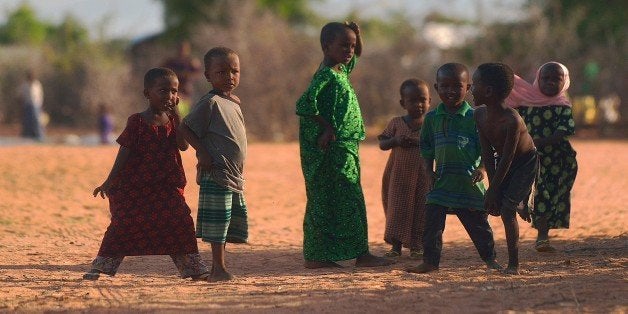
The International Organization for Migration reported this week that over 1,900 migrants have lost their lives so far this year attempting to brave the perilous sea-journey from North Africa to Europe. It's a record death toll -- over double last year's numbers -- within the context of a record year of migration.
A recent report by the United Nations High Commissioner for Refugees (UNHCR) about the Mediterranean route to Europe opens with a bold description of the past years: "the age of refugees."
"Europe is living through a maritime refugee crisis of historic proportions," explained the report. Most importantly, it's a crisis that many European governments don't know how to respond to.
Indeed, it seems to be a paradoxical situation. As British Foreign Office Minister Joyce Anelay explained late last year, "We do not support planned search and rescue operations in the Mediterranean."
"We believe that they create an unintended 'pull factor,' encouraging more migrants to attempt the dangerous sea crossing and thereby leading to more tragic and unnecessary deaths."
On the other hand, many Mediterranean governments simply can't ignore the horrendous loss of life just miles away from their maritime borders. The former search and rescue program, Mare Nostrum, run by the Italian government, was recently replaced with the much smaller Operation Triton, lead by EU organization Frontex. Instead of discouraging illegal migration, Triton has been unable to respond effectively to the growing crisis -- as this year's deadly numbers show.
European Union governments are left with a hard decision: turn their backs to the plight of thousands of migrants, or risk encouraging even more. In order to avoid the conundrum, EU officials have been describing rescue efforts as merely temporary measures as they work separately to address the "root causes."
What exactly those "root causes" are is still rather nebulous. Operation Triton attempts to destroy smuggler vessels after safely securing the migrants. However, some human rights organizations believe that targeting the human traffickers is just scratching the surface of the problem.
Many of the migrants on the Mediterranean route to Europe are from war-torn nations, like Libya, Syria, and even Afghanistan. However, one increasingly large group of migrants is being dubbed "environmental refugees," a whole new form of migrant that has emerged over the past ten years.
The vast majority of these so called "environmental refugees" hail from the Sahel -- a biogeographic region just south of the Sahara desert that stretches from Senegal all the way to Northern Eritrea. It's a massive zone criss-crossing through 17 countries and with around 100 million inhabitants, and much of it is under threat from climate change.
About 70 percent of the Sahel live in rural areas, and in particular rely on subsistence farming. Some communities in the Sahel have had nomadic life-styles for millennia, using traditions and knowledge passed down from generations to feed their herds.
However, the Sahel is one of the most vulnerable regions in the world to future climate fluctuations, and the effects are starting to take root.
Rain fall anomalies, increases in overall-temperature, persistent drought, and other issues like overgrazing have reaped turmoil in the Sahel. Sudden rainfall in 2013 led to flooding, destroying crops and houses for thousands of families. Following the disastrous flooding was a period of intense drought, which has continued for the past two years and is the source of food insecurity for over 18 million. Even worse is desertification, with researchers documenting a shift of sand 60 miles south into the Sahel.
While there is hope for renewed crops following a drought, desertification is almost impossible to revert. Some parts of the region have seen a temperature change of nearly 35 degrees in the past 50 years, and increasing pressure on water-supplies has helped fuel the cycle of desertification.
It's a deadly situation, which has left main residents of the Sahel with few options. With limited land-rights, no legal recourse and no economic ability to migrate, most are forced to abandon the agricultural life-style completely. Often their only destination is urban slums. UNESCO reports that "between 1965 and 1988, the proportion of Mauritania's people living in the capital Nouakchott rose from 9% to 41 %, while the proportion of nomads fell from 73% to 7%"
With the increasing violence and political instability in the Sahel, from the coup and civil war in Mali to the atrocious human rights record in Eritrea, rural migrants are being forced to look outside their national borders for salvation.
Nigerien President Mahamadou Issoufou pointed out perhaps the scariest aspect of this year's migrant deaths following a deadly incident that left 850 drowned off the coast of Libya: the "disconcerting banality" of the international community's response. An event that would have once been front-page worthy in European newspapers in the past is now relatively ignored.
For some in the Sahel, Europe's placid response to the migratory crisis is a major source of discontent. They attribute the Sahel's problems, like Mali's civil conflict, the Boko Haram, and increasing organized crime and gun-running through the region, to the NATO-led military intervention in Libya, which borders the Sahel. The fallout of the intervention, the splintering of Islamist groups through the Sahel, and continuing instability of Libya are all major contributing factors to the troubles of the Sahel. Chadian President Idriss Deby announced "It is our Western friends who must find [the solution], a solution for Libya and for the Libyan people and for Africa."
While the story of the death of nearly two thousand lives is tragic, it's much more complex than it seems. Climate change and globalization have introduced pressures never before seen in fragile developing regions. In this current age, the ripple effects in one region are more far reaching than ever anticipated.